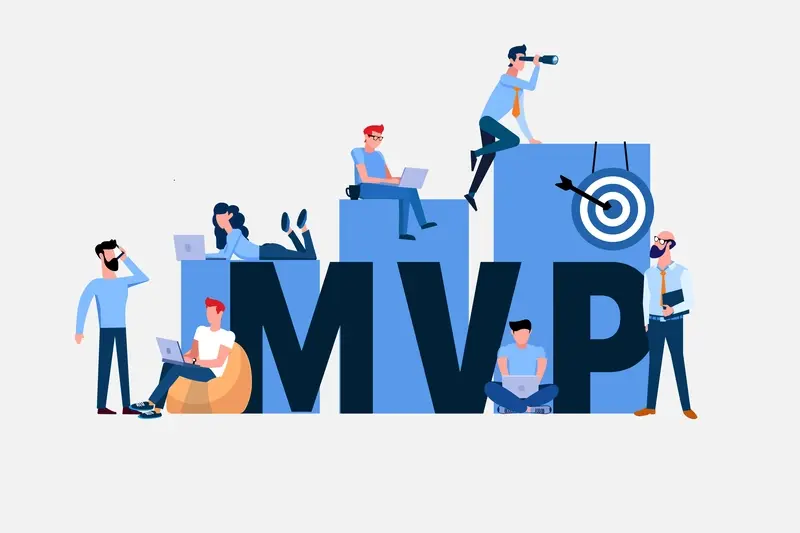What Questions Help You Choose the Right App Platform?
A farming cooperative developed what they thought would be a game-changing crop monitoring app, complete with satellite imagery integration and weather prediction algorithms. They built it exclusively for iOS because "farmers have money for expensive phones." Six months later, they discovered 70% of their target market actually used Android devices—and their app was bleeding money with almost no users. They'd skipped the most basic question: where is our audience actually spending their time?
Choosing the right platform for your mobile app isn't just about personal preference or which operating system you happen to like. It's one of the most important decisions you'll make, and getting it wrong can sink your project before it even gets started. I've watched brilliant app ideas fail simply because the developers picked the wrong platform, while mediocre concepts succeeded because they made smart platform choices from day one.
The thing is, there's no universal "best" platform. iOS might be perfect for a premium productivity app targeting business executives, while Android could be ideal for a utility app aimed at emerging markets. Cross-platform solutions like React Native or Flutter might make sense if you need to launch quickly with limited resources, but they come with their own trade-offs.
The right platform choice can make the difference between an app that struggles to find its audience and one that grows naturally with engaged users from launch day
That's why I always start platform discussions by asking clients a series of specific questions. These aren't abstract theoretical questions—they're practical, business-focused inquiries that help you understand where your app will actually thrive. Because honestly? The best-built app in the world won't succeed if it's on the wrong platform for your users, your budget, and your goals.
Right, let's get straight to the point here—knowing your audience isn't just marketing fluff, it's the foundation of every decision you'll make about your app. I've seen too many projects fail because people built what they thought users wanted, rather than what users actually need.
Your target audience determines everything from which platform to choose to how much you should budget for development. And here's the thing—different demographics live on different platforms. If you're targeting teenagers and young adults, iOS might be your best bet in markets like the UK and US, where iPhone adoption is high among younger users. But if you're building a business productivity app for corporate users? Android's massive global market share suddenly becomes more relevant.
Age and Income Matter More Than You Think
I always tell clients to dig deeper than just "young professionals aged 25-35." What's their disposable income? iPhone users typically have higher spending power, which matters if you're planning to charge for your app or rely on in-app purchases. Android users represent a broader economic spectrum, which can be perfect for apps with advertising-based revenue models.
Geographic location is equally important. If you're targeting emerging markets, Android dominates in most regions outside North America and Western Europe. I've worked on apps where this single factor completely changed our platform strategy.
Where Do Your Users Actually Spend Their Time?
Don't just think about demographics—think about behaviour. Business users might prefer tablets for certain tasks, while fitness apps work best on phones with good sensor integration. The platform choice becomes clearer when you understand not just who your users are, but how and where they'll actually use your app.
How Much Time and Money Do You Have?
Right, let's talk about the elephant in the room—your budget and timeline. I've seen too many app projects crash and burn because people underestimated what they actually needed to spend, both in terms of cash and time. It's honestly one of the most common mistakes I see.
If you're working with a tight budget (and let's be honest, who isn't?), you need to be strategic about platform choice. Building native apps for both iOS and Android will cost you roughly double what a single platform would. That's double the development time, double the testing, and double the maintenance costs down the line.
Budget Breakdown by Platform Approach
- Single native platform (iOS or Android): £15,000 - £50,000+
- Both native platforms: £25,000 - £90,000+
- Cross-platform solution: £20,000 - £65,000+
- Basic web app/PWA: £8,000 - £25,000+
Here's the thing though—going cheap initially can actually cost you more later. I've had clients come to me with half-finished apps built by the cheapest bidder, and rebuilding properly often costs more than doing it right the first time would have.
Timeline wise, native development typically takes 3-6 months for a decent app, but if you're targeting both platforms simultaneously, you're looking at 4-8 months minimum. Cross-platform frameworks like React Native can shave a month or two off that timeline, but they come with their own trade-offs.
Set aside 20-30% extra budget for post-launch updates and bug fixes—trust me, you'll need it. Apps are never truly "finished."
Your available resources will largely dictate your platform strategy. Better to build one really solid app than two mediocre ones that nobody wants to use.
Right, let's talk about features. This is where things get tricky because everyone wants to build the next super app that does everything. But here's the thing—most successful apps start simple and grow from there.
I always tell clients to think about their core feature first. What's the one thing your app absolutely must do well? If someone opens your app and can't figure out the main purpose within 10 seconds, you've probably tried to cram too much in. Instagram started as a photo filter app, not the social media giant it is today. Facebook began as a simple directory for university students.
Start with Your Must-Have Features
Make a list of features and divide them into three categories: must-have, nice-to-have, and future dreams. Your must-have list should be brutally short—we're talking 3-5 features maximum for your first version. Everything else goes in the other categories.
I've seen too many apps fail because they launched with 20 features that all worked poorly instead of 3 features that worked brilliantly. Users would rather have an app that does one thing perfectly than one that does ten things badly.
Think About User Flow, Not Feature Lists
Don't just list features; think about how people will actually use your app. What do they want to accomplish? What steps do they need to take? This helps you spot which features are genuinely needed and which ones are just nice ideas floating around in your head.
Remember, you can always add more features later based on user feedback. But you can't take back a confusing first impression. Start lean, launch faster, and let your users tell you what they actually want next.
Do You Want Native Performance or Cross-Platform Speed?
This is probably the most technical decision you'll make during your app platform selection, but don't worry—I'll break it down without getting too nerdy. Native development means building separate apps for iOS and Android using their specific programming languages. Cross-platform means writing code once and deploying it everywhere. Sounds like a no-brainer, right? Well, its more complicated than that.
Native apps give you the best performance and access to all the latest features each platform offers. Your iOS app feels like it belongs on an iPhone; your Android app feels at home on Samsung devices. The downside? You're basically building two apps, which means double the development time and cost. I've seen budgets stretch from £30k to £60k just because a client decided they wanted native performance after we'd already started planning for cross-platform.
If your app needs to feel lightning-fast and use device-specific features like advanced camera controls or biometric authentication, native is usually the way to go
Cross-platform development has come a long way though. React Native and Flutter can deliver apps that are pretty damn close to native performance for most use cases. The trade-off? You might hit some limitations when you want to implement really specific features, and sometimes the user interface doesn't feel quite as polished. But here's the thing—most users won't notice unless they're looking for it. For many businesses, especially startups trying to validate their mobile platform choice quickly, cross-platform makes perfect sense. You get your app to market faster, spend less money upfront, and can always rebuild parts of it natively later if needed.
How Will You Make Money from Your App?
Right, let's talk money. Because let's be honest—unless you're building an app purely for fun, you'll want to see some return on your investment at some point. I've worked with clients who've made this mistake: they build a brilliant app but never really thought about how it would actually generate revenue. It's a bit mad really, but it happens more often than you'd think.
Your monetisation strategy should influence your platform choice from day one. If you're planning a freemium model with in-app purchases, iOS users typically spend more money per transaction than Android users. That's just the reality of the market—iOS users have historically been more willing to pay for apps and make purchases within them.
Popular Monetisation Models
- Paid downloads (less common these days but still viable for specific niches)
- Freemium with in-app purchases or subscriptions
- Advertising revenue through banner ads, interstitials, or video ads
- Subscription-based models (growing rapidly, especially for content apps)
- Affiliate marketing and commission-based revenue
- Premium features or content unlocking
Here's something interesting I've noticed over the years: subscription models work well on both platforms, but the user behaviour differs slightly. iOS users often commit to annual subscriptions more readily, while Android users prefer monthly options initially. This affects how you structure your pricing tiers and onboarding flow.
If advertising is your main revenue stream, you'll want to consider where your target demographic spends their time. Gaming apps often do well with rewarded video ads, whilst productivity apps work better with subtle banner placements. The key is matching your monetisation method to your user's expectations and behaviour patterns. Get this wrong, and you'll see your retention rates plummet faster than you can say "uninstall".
What Are Your Technical Skills and Resources?
Right, let's get real about your technical situation. I mean, you can have the best app idea in the world but if you don't have the skills or resources to build it properly, you're going to hit a brick wall pretty quickly. And trust me, I've seen this happen more times than I care to count.
First things first—can you or your team actually code? If you're a solo founder with no development background, you'll need to either learn (which takes months, not weeks) or hire someone. iOS development requires Swift knowledge and a Mac to run Xcode. Android needs Java or Kotlin skills. Cross-platform tools like React Native or Flutter? They still need proper programming knowledge, despite what some marketing materials might suggest.
Your Team's Current Capabilities
Look at what you've actually got right now. Do you have designers who understand mobile UI patterns? Developers who know the platform guidelines? Someone who can handle backend services and APIs? Each platform has its quirks—Android's fragment lifecycle can be a nightmare if you don't know what you're doing, and iOS has strict review guidelines that can reject your app for the smallest oversight.
- In-house developers familiar with your chosen platform
- Budget for hiring external developers or agencies
- Design resources for platform-specific interfaces
- Project management experience for mobile development
- Quality assurance and testing capabilities
Budget Reality Check
Here's something people don't always consider—maintaining an app requires ongoing technical resources. You'll need bug fixes, OS updates, new feature development. If your entire technical knowledge walked out the door after launch, you're in trouble. Factor in whether you can afford to keep technical talent on retainer or if you need to build internal capabilities for the long haul.
Be honest about your technical gaps early on. It's better to acknowledge what you don't know and plan accordingly than to discover halfway through development that you're in over your head. Consider starting with a simpler platform choice that matches your current capabilities rather than stretching too thin.
How Quickly Do You Need to Launch?
Time pressure can make or break your app project—I've seen brilliant ideas die because they took too long to get to market, and I've watched rushed apps crash and burn because they weren't ready. Getting the timing right is part art, part strategy, and honestly? Sometimes it's just luck.
If you need to launch in under three months, cross-platform development is probably your best friend. React Native or Flutter can get you on both iOS and Android fast, though you'll sacrifice some performance and might hit a few platform-specific hurdles along the way. Native development for both platforms simultaneously? That's going to need a bigger team and a bigger budget.
The Reality of Quick Launches
Here's what most people don't realise about speed—rushing to market with a half-baked app is worse than being late with a good one. App store ratings are brutal, and users these days have zero patience for buggy experiences. Once you've got those one-star reviews, climbing back up is like swimming upstream.
That said, if you're facing real competition or there's a genuine market opportunity that won't wait, sometimes you've got to take calculated risks. I usually recommend the MVP approach—build the core features really well rather than trying to include everything. You can always add more functionality later, but you can't easily fix a reputation for poor quality.
Platform Priority Decisions
When time is tight, pick one platform first. iOS typically has faster approval times and a more predictable review process, but if your audience is primarily Android users, that choice makes itself. Launch strong on one platform, gather feedback, iterate, then expand to the second platform with lessons learned.
What's Your Long-Term Growth Plan?
Right, let's talk about something most people skip when choosing their app platform—where do you actually want to be in three to five years? I see this mistake all the time; clients get so caught up in launching their first version that they forget to think about what happens when they want to expand.
Your growth plan affects platform choice more than you might think. Planning to go international? Android dominates in markets like India, Brazil, and most of Africa—you can't ignore that if global expansion is on your roadmap. Want to add features like AR shopping or advanced camera functions later? iOS typically gets these capabilities first, sometimes by months.
Then there's the business side of growth. If you're planning to raise investment, investors love seeing clear user acquisition strategies. iOS users generally spend more on apps, but Android gives you access to billions more potential customers. It's a trade-off between quality and quantity, basically.
The most successful apps I've worked on had founders who could clearly articulate not just what their app would do, but how they planned to grow their user base over the next two years
Here's something people don't consider—platform migration gets expensive fast. I've seen companies spend six figures moving from a web app to native, or rebuilding their Android app for iOS because they needed App Store credibility for partnerships. Starting with the right platform strategy saves you from these painful (and costly) pivots later.
Your growth plan should also factor in team scaling. Will you hire developers in-house? Different platforms require different skill sets, and good iOS developers are harder to find than Android ones in most markets. Think about your long-term technical needs, not just your immediate launch requirements.
Conclusion
Right, we've covered quite a bit of ground here—from figuring out where your users hang out to planning your long-term growth strategy. But here's the thing: choosing the right app platform isn't just about ticking boxes or following some rigid formula. It's about making smart decisions based on your specific situation.
I've seen too many projects go sideways because someone got caught up in the latest tech trends or made platform choices based on what their mate down the pub recommended. The questions we've walked through aren't just academic exercises; they're the same ones I ask every client who comes through my door. Why? Because they work.
Your platform choice affects everything—your development timeline, your budget, your user experience, and ultimately whether your app succeeds or joins the millions of forgotten apps in the digital graveyard. A bit dramatic? Maybe. But it's true.
The mobile landscape keeps shifting under our feet. New frameworks pop up, platform policies change, user expectations evolve. What doesn't change is the need to make informed decisions based on solid reasoning rather than gut feelings or flashy marketing promises.
Look, there's no perfect platform choice that works for everyone. iOS might be perfect for your premium fitness app targeting affluent professionals, but completely wrong for your utility app aimed at price-conscious students. Cross-platform might save you months of development time, or it might create performance headaches that cost you users.
The key is asking the right questions—the ones we've covered—and being honest about your answers. Your app platform should serve your business goals, not the other way around.
Share this
Subscribe To Our Learning Centre
You May Also Like
These Related Guides

How Do I Plan For Multi-Platform App Architecture?

How Do I Select the Right Development Approach for My Mobile App?



